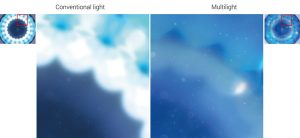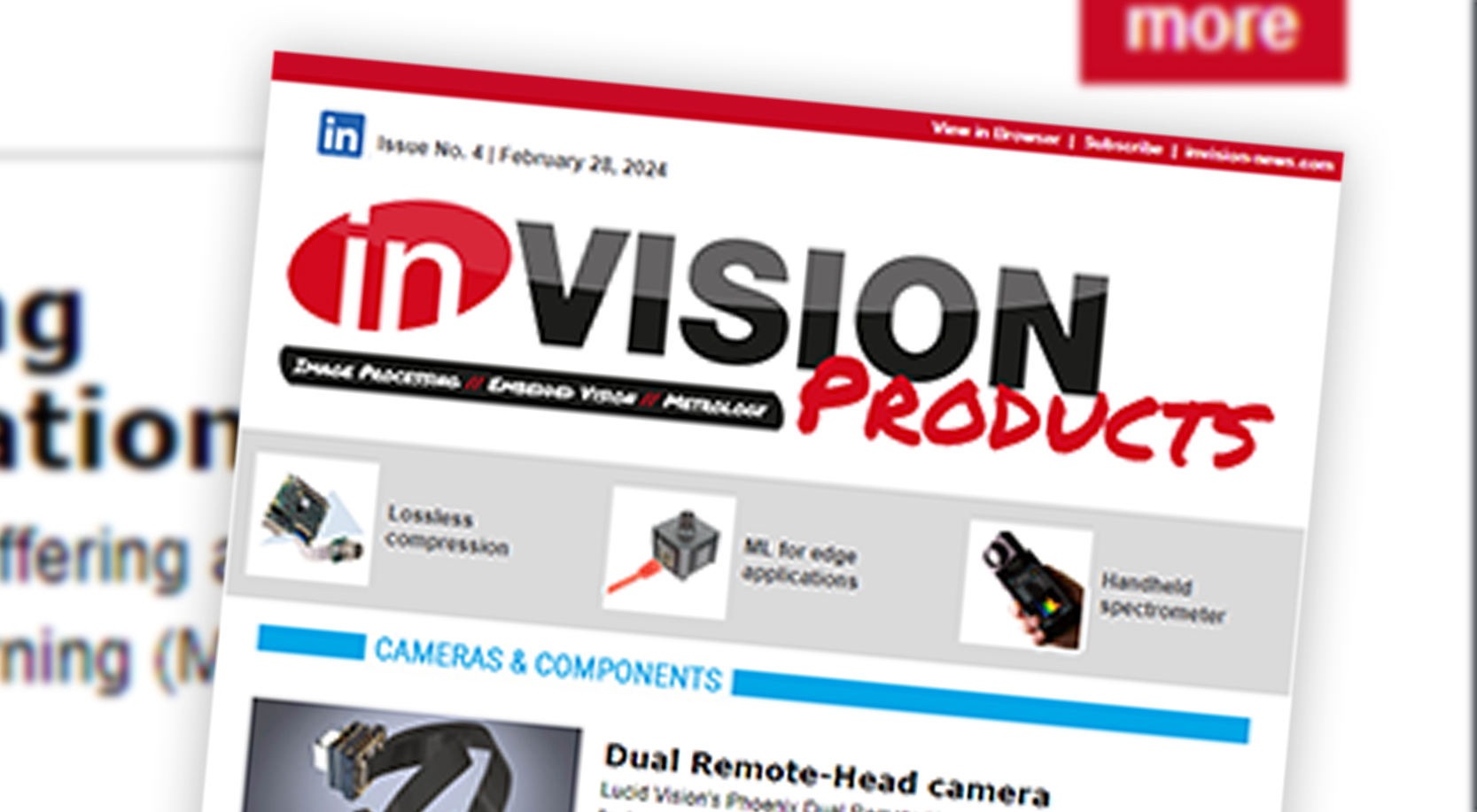Multi-Light
Flicker- and Reflection-Free Illumination for Machine Vision
A new multi-light technology is mixing several images of an object with varying lighting environments for better image results.

the multi-light technology gives the best result, removing
highlights and enhancing the details.
The speed is actually limited by the speed of current high-speed camras.
for the operator looking at the sample with a naked eye.
nearly the same as for a conventional lighting.
standard mode of illumination by one click.
knowledge is required from the operator.
For human and machine vision it is very important to maximize the contrast of inspected features of an objects and remove areas obstructing the inspection, like reflection, glare and shadows. A standard solution for this problem is a careful adjustment of the lighting setup for the inspected scene. A new multi-light technology can empower this solution and in some cases transcend it, by mixing several images of an object with varying lighting environment. On image 1 you see how multi-light technology works on a diode with a lense. A multi-light algorithm takes four images with glare from top light sections and gives the resulting image where specular highlights are removed and enhanced the contrast of the details. One of the most challenging cases for inspection are objects with curved or polished surfaces giving specular reflections and transparent objects. Typical lighting arrangements result in specular reflections at all sample orientations. Multi-light reveals a fine surface structure and internal details. For transparent objects standard lighting create reflections and refractions which obscure internal features. The new technology reveals internal details. On image 2 you can see the comparison of the images of an iPhone XS internal camera lens (second lense under the cover) under conventional light and obtained by multi-light technology. The dust and defects of the lens are visible better on multi-light image.












